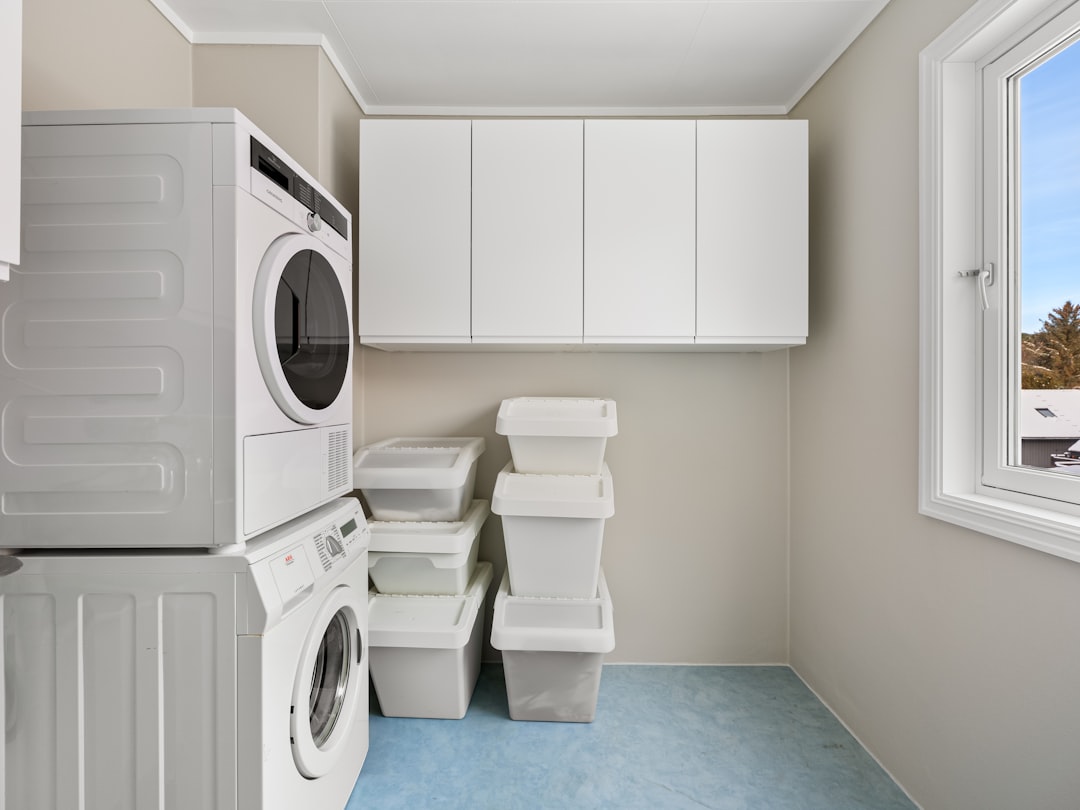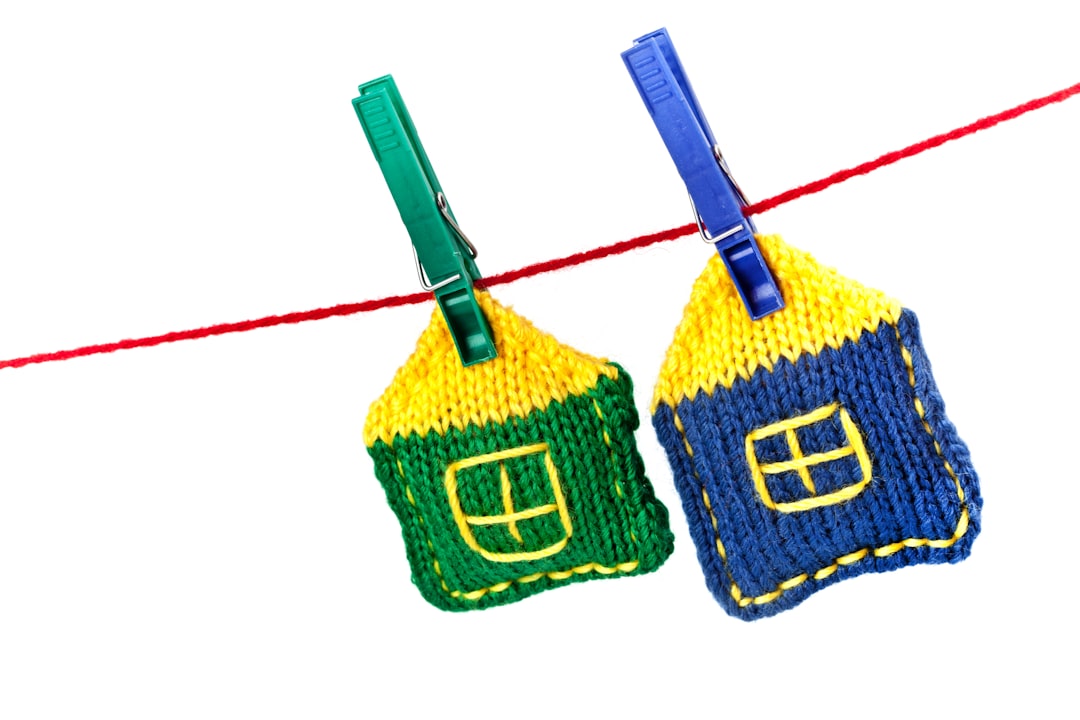

Engage prospects with a scan and streamline customer engagement with FREE QR code marketing tools by Sona – no strings attached!
Create a Free QR CodeFree consultation

No commitment

Engage prospects with a scan and streamline customer engagement with FREE QR code marketing tools by Sona – no strings attached!
Create a Free QR CodeFree consultation

No commitment
Digital transformation is reshaping B2B commerce, yet house cleaning equipment suppliers continue to experience disconnects between offline interactions and online results. Often, valuable buyer intent signals, such as a product inquiry or catalog scan, are lost due to paper-heavy workflows and fragmented communication channels. As a result, high-value prospects may go untracked, anonymous research goes unnoticed, and opportunities to engage buyers at critical moments slip away.
Today's QR code technology offers a practical bridge for overcoming these challenges. Suppliers can now move beyond generic print assets and static brochures by turning each product, manual, or marketing piece into a data-rich resource. Imagine a maintenance sticker on a floor scrubber instantly guiding a facility manager to a how-to video, or a trade show display seamlessly capturing lead details in real time. By linking these interactions to digital assets and integrating with CRMs or analytics tools, suppliers gain the visibility and agility required to engage throughout the entire customer journey, such as with a HubSpot integration.
This guide explores how QR code strategies enable house cleaning equipment suppliers to solve common business pains, streamline lead nurturing, and boost conversions. You will discover actionable scenarios for replacing outdated workflows with dynamic, measurable QR solutions, transforming every customer interaction into actionable data and tangible business impact.

House cleaning equipment sales often span multiple touchpoints, from showroom visits and printed catalogs to field demos, maintenance calls, and reordering. In that complexity, intent signals are easy to miss. A buyer may scan a brochure, inspect a scrubber in a branch, or pick up a sample at a trade show, yet never complete a traditional lead form. QR codes in marketing make those intent moments scannable and trackable, turning analog interactions into measurable digital engagement without asking buyers to install an app.
The key is to replace friction-heavy steps with QR-enabled workflows that connect directly to digital assets and your CRM, guided by Sona QR’s use case library. Printed manuals become living documents, quote requests happen in seconds, and maintenance histories follow the machine, not the user. Each scan can route buyers to the exact next step they need while giving your team the data needed to prioritize follow-ups and segment audiences intelligently.
These small changes compound quickly. Scans replace manual keystrokes, activity data flows into your systems without staff effort, and buyers progress through the journey with far less friction. Start creating QR codes for free.

Cleaning equipment buyers range from facility managers and building service contractors to hospitality and healthcare procurement teams. Many evaluate products in person, then research quietly online, making it hard for suppliers to connect the dots. QR codes reduce that gap by creating direct pathways from physical assets to digital experiences where engagement can be measured, segmented, and nurtured.
By deploying QR codes consistently across products, packaging, and marketing touchpoints, suppliers unlock speed, simplicity, and data. Scans occur in the moment of curiosity, which is when buyers are most receptive to content that advances decisions. That immediacy makes QR codes particularly powerful for high-consideration equipment that requires demos, comparisons, or financing conversations.
For materials common to the industry, like installation stickers, service logs, safety placards, and catalog one-sheets, QR codes bring clarity and control. A maintenance decal can carry a QR code for instant troubleshooting. A catalog page can route to an always-current product page with financing options. Each scan becomes the next right step toward conversion. Create and manage them centrally in Sona QR.
Different interactions call for different QR formats. A distributor might want to drive a facility manager to book a demo, while a service team needs a fast way to log a repair. Choosing the right QR type ensures an effortless user experience and reliable data capture. Most suppliers benefit from a mix of dynamic codes for campaigns and updates, and static codes for permanent references such as safety sheets.
Focus on formats that align with your most frequent workflows: equipment research, contact exchange, service coordination, and repeat purchasing. With a platform like Sona QR, you can create, manage, and update these formats centrally, then route scan data into your CRM and analytics tools.
In this vertical, forms and web links typically drive the most value, since they capture intent and accelerate the path to demo or reorder. vCards are highly effective for field reps, and dynamic links make it easy to swap destinations as campaigns evolve.

Growth often hides in day-to-day interactions: a maintenance call, a replacement part inquiry, a safety training, or an aisle walk-through. QR codes make these moments measurable, opening the door to better conversion and tighter retention. See creative ideas specific to commercial cleaning.
Suppliers who consistently tag equipment, displays, paperwork, and signage report clearer attribution and faster follow-ups. By capturing micro-moments, such as a scan of a pricing sheet or a download of a cleaning protocol, you gain signals that lead to smarter routing and higher close rates.
Every one of these placements expands your visibility into the buyer journey. What was previously anonymous or lost becomes a structured data trail tied to accounts and opportunities.

House cleaning equipment is often evaluated onsite, installed under time pressure, and maintained by rotating teams. QR codes can streamline that lifecycle, improving both customer experience and operational efficiency. Three proven use cases stand out for this vertical, and each one addresses a common friction point.
First, digital product manuals accessed via QR codes prevent support tickets spawned by missing or outdated print guides. Second, scannable quote requests transform interest at the shelf or in the field into a tracked opportunity, bridging the gap between curiosity and sales contact. Third, simple feedback and reviews gathered by QR codes give suppliers visibility into satisfaction, performance, and cross-sell potential.
These use cases not only solve practical problems but also create a continuous data loop. Each scan enriches profiles and informs the next best action, from sending a maintenance reminder to inviting a large account to a private demo day.
Every scan is a behavioral signal: what was scanned, where, and when. With QR codes placed across the customer journey, suppliers can automatically segment audiences by interest, location, and lifecycle stage. This segmentation drives personalized follow-ups via email, SMS, or ads, raising conversion rates and improving the efficiency of sales outreach.
Audience distinctions matter in this space. For instance, a building service contractor evaluating bulk equipment has different needs than a facilities team ordering pads and detergent for existing machines. Similarly, a maintenance tech scanning a service tag on-site may need troubleshooting content, while a procurement lead scanning a pricing sheet likely wants financing options and delivery timelines.
Typical segments for house cleaning equipment suppliers include branch visitors, field service technicians, facility managers, procurement teams, and safety officers. Tailor offers and content to each group for the strongest performance.
QR codes connect the offline surfaces where your products live to the online destinations that drive action. In a category where a large share of discovery and evaluation happens in person, this connection is crucial. By assigning unique codes to every major channel, you can attribute outcomes accurately, optimize creative, and follow up with precision.
A unified QR strategy supports the full arc of your marketing and sales motion. Print catalogs feed traffic to spec pages with demo videos. Event signage captures lead details and product interest instantly. Branch displays unlock comparisons, financing pre-qualification, and in-stock alerts. The result is a consistent, measurable customer experience across channels.
With a centralized platform like Sona QR, your team can manage all codes, monitor performance in real time, and stream scan data to your CRM and ad tools to accelerate follow-ups.
Start by defining a clear business outcome. Are you trying to increase demo requests for a new ride-on scrubber, reduce service ticket backlog, or capture reorders from existing accounts more efficiently? Pair the use case with a measurable goal such as a target number of scans, a conversion rate to form completion, or a reduction in response time from inquiry to first contact.
Consider the analog processes you can retire. Replace paper warranty cards with scan-to-activate flows, swap printed manuals with dynamic documentation, and move from generic branch phone numbers to QR-led chat or scheduling. Identify the one friction point that, if solved, will deliver the fastest win for your team.
Select static or dynamic codes based on your need for flexibility and tracking. Static codes are suitable for permanent references like safety sheets or evergreen manuals, while dynamic codes let you edit destinations and capture analytics without reprinting. For most campaigns and lead capture efforts, dynamic codes are the smarter choice.
Match the format to the action. Use web links for deep content, forms for quotes or service, vCards for quick contact exchange, and app downloads if you have a mobile toolset. With Sona QR, you can generate all formats, tag them by campaign, and centralize reporting for a single source of truth. Start creating QR codes for free.
Good design boosts scan rates. Add a clear call to action near the code, use sufficient contrast, and size appropriately for the viewing distance. Include branding elements like your logo and colors, but avoid clutter that interferes with scannability. Frame the code with benefit-driven text such as Scan to book a demo or Scan for parts and maintenance.
Test across devices and contexts before rollout. Check scans from various angles and lighting conditions, validate loading speed, and ensure the destination is mobile-first. Consider alternative text or short links as a backup when scanning is not possible due to poor connectivity.
Place codes at the points where buyers seek clarity or commitment. This includes showroom displays, branch counters, equipment labels, service trucks, event booths, and direct mail. Map each placement to the intended action and audience segment, such as procurement vs. maintenance or new prospects vs. existing customers.
Sequence placements to guide the journey. For example, awareness at a trade show, consideration in a follow-up catalog, and conversion via a pricing sheet in a branch. Tag each placement in Sona QR so you can attribute performance and refine your mix over time.
Monitor performance using dashboards that show scans by time, location, device, and campaign. Measure downstream actions such as form fills, demo bookings, and quote conversions. Identify drop-off points, then test alternative layouts, CTAs, or destinations to improve results.
Run A/B tests on landing pages and creative. Adjust content based on segment behavior, such as showing maintenance-heavy buyers service plans first or highlighting energy efficiency for sustainability-conscious accounts. Feed insights back into your placements and creative briefs so each campaign performs better than the last.
Without connected analytics, QR codes are just links. With a modern stack, each scan becomes a measurable touch that contributes to offline attribution and pipeline forecasting. For house cleaning equipment suppliers, this is a chance to unify analog and digital signals for the first time, creating a complete picture from first scan to closed deal.
Strong tracking captures more than count. It shows which materials and placements produce engaged leads, which accounts are heating up, and how offline engagement influences online behavior. When scan activity syncs directly to CRM records, your team can act on signals in real time and credit the channels that truly move the pipeline.
Sona QR captures the real-world engagement that happens around your products and branches, while Sona.com ties those interactions to marketing and sales outcomes. For deeper segmentation and audience modeling, see Sona’s intent data guide. Together, they help you move beyond vanity metrics and connect scans to revenue with confidence.
Successful QR strategies are disciplined and creative. The discipline ensures each scan is trackable, attributable, and connected to a next best action. The creativity ensures placements and offers feel natural in day-to-day workflows, from the loading dock to the showroom floor.
Focus on the media your buyers already use and the moments when they need an immediate answer. Lean on automation to handle follow-ups, and train your teams to promote scanning as part of the standard experience.
By emphasizing clear CTAs, disciplined tracking, and helpful destinations, you can lift scan rates and conversion while turning operational touches into marketing wins.
In a hands-on industry where decisions are often made on the shop floor or after a quick demo, QR codes bring immediacy and insight to every interaction. They replace guesswork with data and replace friction with one-scan actions that move buyers forward. For house cleaning equipment suppliers, this means fewer missed opportunities, faster follow-ups, and a truly connected buyer journey that spans print, product, and digital.
Treat QR codes as a strategy, not a novelty. Build them into your catalogs, equipment, invoices, and events. Tie every scan to a next step, and route the data into your core systems. With Sona QR and Sona.com, you can generate codes, manage destinations, capture scan data, and attribute outcomes across your full funnel, creating the foundation for truly measurable growth.
QR codes have revolutionized the house cleaning equipment suppliers industry by transforming product interactions into seamless, measurable engagement opportunities. From streamlining equipment information access to enabling instant service requests, QR codes enhance customer acquisition and elevate the overall buying experience, making every touchpoint more efficient and impactful. Imagine your clients instantly accessing detailed product specs, maintenance guides, or promotional offers with a simple scan—turning curiosity into confident purchasing decisions.
With Sona QR, you can effortlessly create dynamic, trackable QR codes that update in real time without the need to reprint labels or brochures. This means you stay agile, connecting every scan directly to valuable data that reveals customer preferences and drives smarter inventory and marketing strategies. Don’t miss out on turning your house cleaning equipment assets into powerful conversion tools.
Start for free with Sona QR today and unlock the full potential of QR codes to boost sales, enhance customer experiences, and grow your business.
The article does not list specific top-rated house cleaning equipment suppliers but focuses on how suppliers can improve engagement using QR code technology.
Choose suppliers who leverage digital tools like QR codes to connect offline and online buyer interactions, provide seamless access to product information, and integrate data with CRM systems to enhance customer engagement and service.
Essential equipment includes floor scrubbers, ride-on scrubbers, high-filtration vacuums, and related accessories like pads, batteries, and detergents.
Use QR-enabled maintenance stickers and digital forms affixed to machines to submit service requests, view parts diagrams, and update service status, with all records syncing to your CRM for better tracking and SLA management.
The latest innovations involve integrating QR code technology to create interactive, data-rich resources on equipment and packaging that streamline workflows, track buyer intent, and enable real-time engagement throughout the customer journey.
QR codes transform printed materials and product labels into interactive gateways that enable buyers to access tutorials, request quotes, schedule demos, reorder supplies, and submit feedback, all while capturing valuable data for suppliers.
Common formats include web links for product information, vCards for contact sharing, forms for quotes and service requests, Wi-Fi access for events, and app downloads for service tools.
Place QR codes on product packaging, manuals, showroom displays, service tags, invoices, trade show materials, and point-of-sale signage to capture buyer interest at multiple touchpoints.
Suppliers can segment audiences based on scan behavior, location, and lifecycle stage by assigning unique QR codes to different customer journey stages and syncing this data with CRM and ad platforms for personalized follow-ups.
Define a clear use case and measurable goal, select appropriate QR code types, design and test codes for usability, deploy across key touchpoints, and monitor performance to optimize results.
Tracking scan details like device, location, and timing allows suppliers to attribute engagement accurately, enrich CRM data, measure channel performance, and connect offline interactions to revenue.
Use unique codes for each asset, add UTM parameters for tracking, automate follow-ups, train teams to encourage scanning, innovate QR placements related to daily tasks, and ensure integration with CRM and marketing tools.
QR codes on equipment link to dynamic, model-specific manuals and videos that can be updated in real time, reducing support calls and improving staff onboarding.
Yes, QR codes on invoices and delivery receipts can prompt customers to submit reviews and feedback, enabling suppliers to improve service and identify cross-sell opportunities.
QR codes on warranty cards and reorder tags open pre-filled digital forms that reduce errors, capture customer details, and trigger automated confirmations, streamlining the process.
Use Sona QR's trackable codes to improve customer acquisition and engagement today.
Create Your FREE Trackable QR Code in SecondsJoin results-focused teams combining Sona Platform automation with advanced Google Ads strategies to scale lead generation

Connect your existing CRM

Free Account Enrichment

No setup fees
No commitment required

Free consultation

Get a custom Google Ads roadmap for your business






Launch campaigns that generate qualified leads in 30 days or less.
